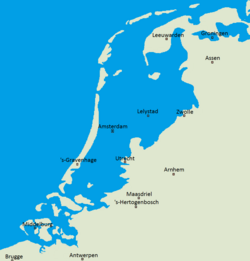| # | Name | Country | Depth | Notes / references |
|---|
| 1 | Badwater Basin, Death Valley, California | United States | −86 m (−282 ft) [5] | lowest point in North America |
| 2 | Bombay Beach, California | United States | −69 m (−226 ft) | Salton Sink −66 m (−217 ft) |
| 3 | Salton Sea Beach, California | United States | −67 m (−220 ft) | Salton Sink −66 m (−217 ft) |
| 4 | Desert Shores, California | United States | −61 m (−200 ft) | Salton Sink −66 m (−217 ft) |
| 5 | Calipatria, California | United States | −56 m (−184 ft) | Salton Sink −66 m (−217 ft) |
| 6 | Westmorland, California | United States | −48 m (−157 ft) | Salton Sink −66 m (−217 ft) |
| 7 | Lake Enriquillo | Dominican Republic | −46 m (−151 ft) | lowest place on an island country. |
| 8 | Niland, California | United States | −43 m (−141 ft) | Salton Sink −66 m (−217 ft) |
| 9 | Salton City, California | United States | −38 m (−125 ft) | Salton Sink, −66 m (−217 ft) |
| 10= | Brawley, California | United States | −37 m (−121 ft) | Salton Sink, −66 m (−217 ft) |
| 10= | Thermal, California | United States | −37 m (−121 ft) | Salton Sink, −66 m (−217 ft) |
| 12 | Coachella, California | United States | −22 m (−72 ft) | Salton Sink, −66 m (−217 ft) |
| 13 | Imperial, California | United States | −18 m (−59 ft) | Salton Sink, −66 m (−217 ft) |
| 14 | Seeley, California | United States | −13 m (−43 ft) | Salton Sink, −66 m (−217 ft) |
| 15 | El Centro, California | United States | −12 m (−39 ft) | Salton Sink, −66 m (−217 ft) |
| 16 | Laguna Salada, Baja California | Mexico | −10 m (−33 ft) | |
| 17 | Indio, California | United States | −6 m (−20 ft) | Salton Sink, −66 m (−217 ft) |
| 18 | Heber, California | United States | −5 m (−16 ft) | Salton Sink, −66 m (−217 ft) |
| 19 | Holtville, California | United States | −3 m (−10 ft) | Salton Sink, −66 m (−217 ft) |
| 20 | New Orleans, Louisiana | United States | −2 m (−7 ft) | |



